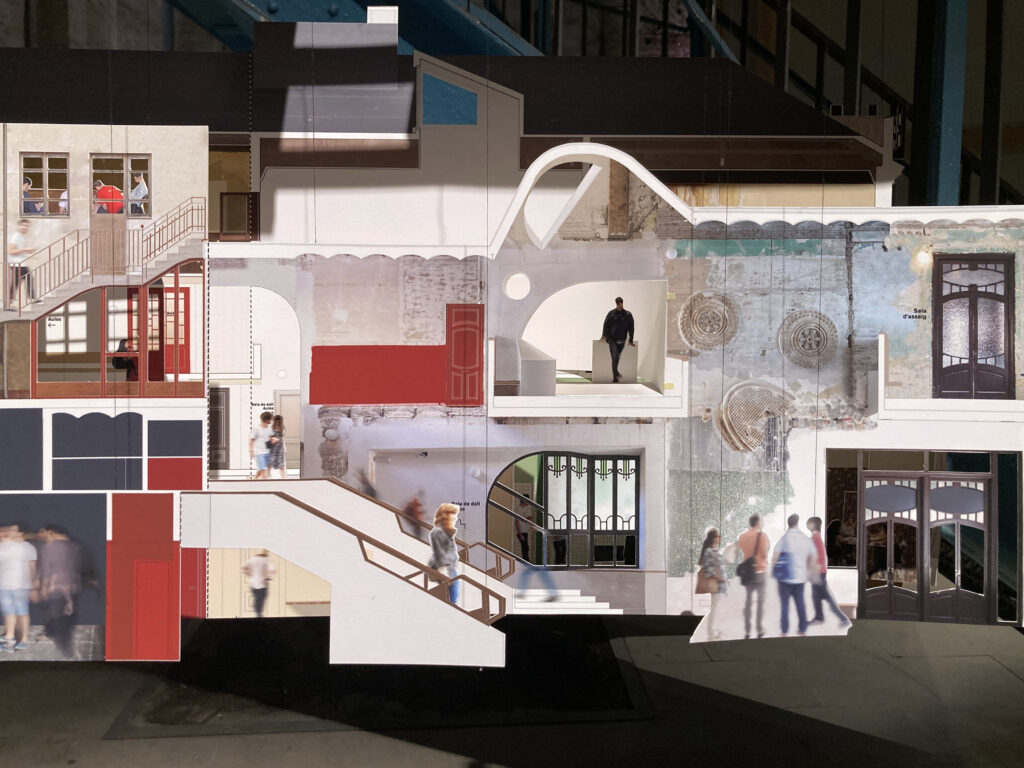

The Sala Beckett Performing Arts Centre by Flores and Prats emerged as a retelling of the former The Workers Cooperative Pau I Justícia in Poblenou, a significant symbol for all those living around it even twenty years after its doors had been shut closed in the late 1990s.
As headquarters of one of the driving forces of Catalan theatre since its foundation in the late 1980s, the architects juxtapose the history of the Sala Beckett theatre upon that of the Pau I Justícia, conjuring collective social memories of both spheres. With a careful balance between restoring the old, adding the new, and presenting the process of “ageing” within the architecture of the building and its interiors, the theatrics of the building extends from the theatre hall throughout the entirety of the building, climaxing at the foyer that welcomes its audience. The architects befriend the “ghosts” of the former social club and in doing so, immerse the building’s users into overlapping timelines, stolen glances, and nostalgia.
My interest in the adaptive reuse of particularly interior spaces to evoke memory arises from this project. To me, it is the perfect example of all that the practice of adaptive reuse offers; its ability to retell stories, befriend ghosts of a building and its occupants’ pasts, and offer something particularly special to the area of architecture — experiences of incomplete spaces, ambiguity, and of built-up meanings. It transcends the formal requirements of a reuse project and dwells in the soft values; in emotions and memories and tales of those that have occupied it over the years. Simultaneously it engages its current users, inspiring new stories to be etched upon its unfinished walls. The building’s new use aligns perfectly with the historic social value it carries. The architect’s emphasis on employing the building’s interior elements ranging from old cornices, rosettes, floors, and doors to new light wells and palettes of complimentary colors and materials highlights the significance of interior spaces in adaptive reuse. This approach recognises the potential for interiors to become active participants in the building’s narrative and highlights the autonomy and dynamism offered by the reuse of historic interiors.
